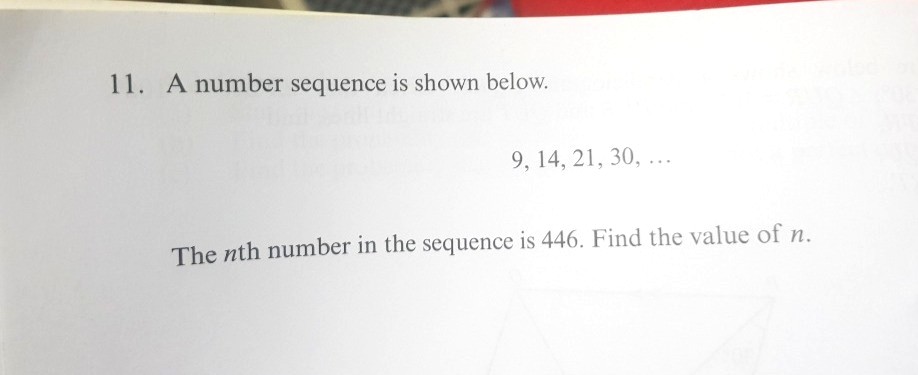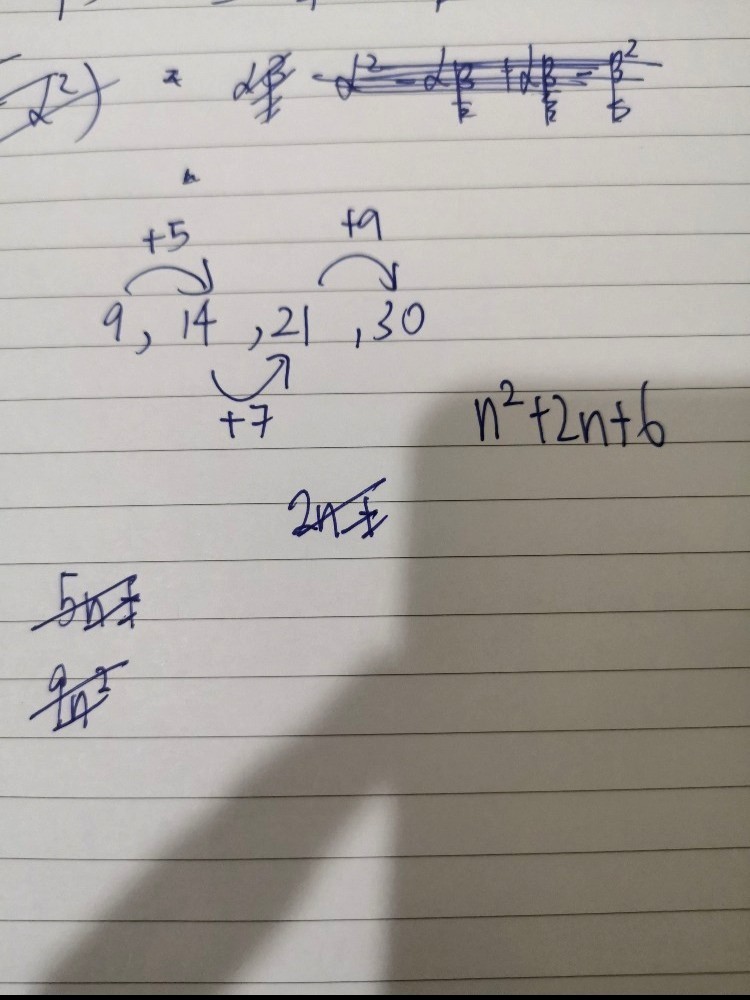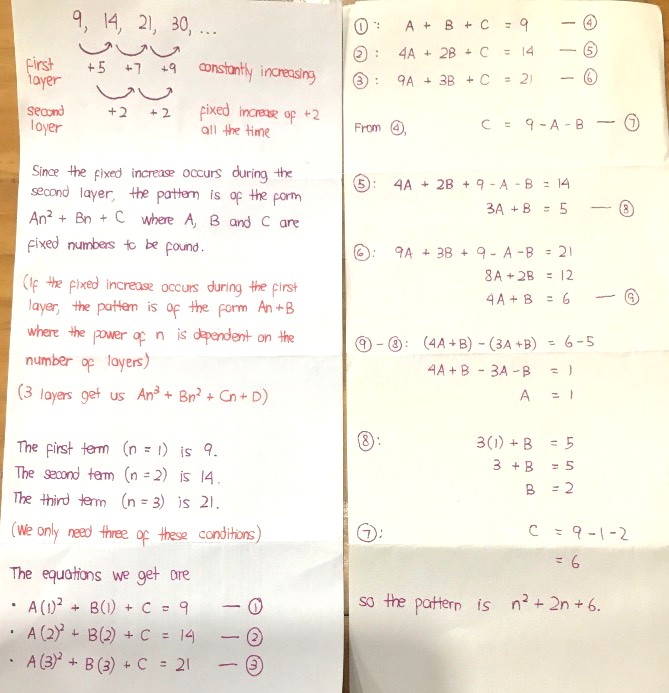Ask Singapore Homework?
Upload a photo of a Singapore homework and someone will email you the solution for free.

Question
secondary 2 | Maths
3 Answers Below
Anyone can contribute an answer, even non-tutors.

Pls help having problems, thanks
= 6 + 3
= 6 + 1 x 3
= 6 + 1 x (1 + 2)
Term 2 = 14
= 6 + 8
= 6 + 2 x 4
= 6 + 2 x (2 + 2)
Term 3 = 21
= 6 + 15
= 6 + 3 x 5
= 6 + 3 x (3 + 2)
Term 4 = 30
= 6 + 24
= 6 + 4 x 6
= 6 + 4 x (4 + 2)
So term n would be
= 6 + n x (n + 2)
= 6 + n² + 2n
= n² + 2n + 6
When the nth term = 446,
n² + 2n + 6 = 446
n² + 2n - 440 = 0
(n - 20)(n + 22) = 0
n = 20
or
n = -22(rejected as n cannot be negative)
So n = 20
What I would do is to recognise that the difference of the difference of the terms are fixed, so the pattern must be of the form An2 + Bn + C = number.
Then sub in the first three numbers of the pattern and proceed to solve for A, B and C using the three equations formed.
Term 1 = 9
= 4 + 5
= 4 + 5 x 1 + 0
= 4 + 5 x 1 + (1 - 1)(1 - 2)
Term 2 = 14
= 9 + 5
= 4 + 5 x 1 + 5
= 4 + 5 x 2
= 4 + 5 x 2 + 0
= 4 + 5 x 2 + (2 - 1)(2 - 2)
Term 3 = 21
= 14 + 7
= 4 + 5 x 2 + 5 + 2
= 4 + 5 x 3 + 2 x 1
= 4 + 5 x 3 + (3 - 1)(3 - 2)
Term 4 = 30
= 21 + 9
= 4 + 5 x 3 + 2 x 1 + 5 + 2 x 2
= 4 + 5 x 4 + 3 x 2
= 4 + 5 x 4 + (4 - 1)(4 - 2)
Term 5
= 30 + 11
= 4 + 5 x 4 + 3 x 2 + 5 + 2 x 3
= 4 + 5 x 5 + 4 x 3
= 4 + 5 x 5 + (5 - 1)(5 - 2)
Term 6
= 30 + 11 + 13
= 4 + 5 x 5 + 4 x 3 + 5 + 2 x 4
= 4 + 5 x 5 + 5 x 4
= 4 + 5 x 5 + (6 - 1)(6 - 2)
So ,
Term n
= 4 + 5 x n + (n - 1)(n - 2)
= 4 + 5n + n² - 3n + 2
= n² + 2n + 6
The rest is the same as above
Your method is more suitable for H2/A levels (common difference / common difference of differences). At sec 2, it's even harder to fathom how one gets to the formula an² + bn + c
I have included the guideline in my posted workings.
For power 2 (2 layers), differentiating an² + bn + c twice gives the constant 2a
(which is the constant difference of differences you mentioned)
The working is similar for other layers.
See 3 Answers
eg. 3,11,22,36,53...







